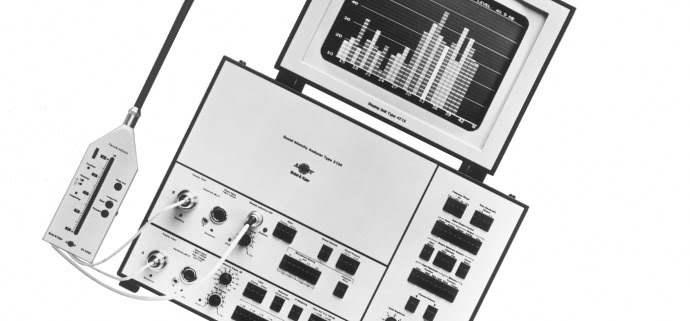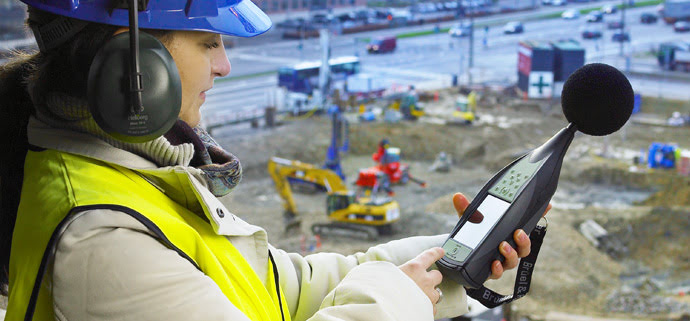
History of Brüel & Kjær
Brüel & Kjær plays a leading leading role in the world of sound and vibration. From the world's first charge accelerometer in 1943, which most accelerometers today are still based on, to the first portable sound level meter, to the analyzer systems for 21st-century satellite systems, Brüel & Kjær has provided industry innnovation, from the very beginning.
A humble start

Long before the legendary “garage nerds” of Silicon Valley, Denmark had its own technological visionaries – Per V. Brüel and Viggo Kjær. Brüel was the salesman and Kjær was the scientist. In many ways, they were a perfect match – both were firmly dedicated to placing the common goals of technological progress, science, and solutions above financial prosperity. Both knew if their technology was superior, the financial rewards would soon come.
In 1942, during one of the darkest times in Danish history, they founded a company based strictly on sound and vibration measurement. They were told by friends and mentors, “A company like that will never be able to support both of you.” Yet today, Brüel & Kjær has over 1000 employees globally.
Green paint – from surplus to symbol
Starting as they did during WWII, the pair of entrepreneurs needed to scrounge for every part and scrap of wire and to paint the instrument cases, they found some surplus army-green paint. Seven decades later, Brüel & Kjær instruments can still be recognized thanks to their distinctive green colour.
The following list highlights some of the ‘green’ milestones along the way.
Brüel & Kjær through the years
1942
1943
1948
The company moves to the site of its current headquarters in Nærum, Denmark
1949
1958
The company starts its global expansion, establishing a sales office in the USA, soon followed by offices throughout Europe, the Middle East, Asia, and Africa over the next few decades
1958
1960
1962
Per V. Brüel, an accomplished pilot, founded Brüel & Kjær Airways. A small fleet of company-owned and operated planes were used to deliver goods and to visit customers throughout the world, and to distant destinations such as Thailand, USA and Egypt. Per Brüel was often the pilot on these flights
1966
1977
1980
Brüel & Kjær becomes the first western electronics firm to set up a service center in the People’s Republic of China.
1981
The company celebrates the production of its 1,000,000th instrument
1981
1983
1986
Introduction of the world’s first commercial acoustical holography system (Spatial Transformation of Sound Fields, STSF) to enable a complete model of the sound field to be made
1991
1996
Brüel & Kjær introduces what has become the backbone of our analyzer solutions: the Windows®-based PULSETM system. It included the groundbreaking concept of multi-analysis so that engineers could perform all their analyses simultaneously while monitoring the results live on-screen. The PULSE platform has evolved ever since and is now a comprehensive, flexible suite of software and hardware (including LAN-XI modular data acquisition (2008) and BK Connect sound and vibration analysis software (2018))
1994
2004
2004
The world’s first flat surface microphone is developed with Airbus to measure sound pressure (noise) in limited spaces and where flush mounting of conventional microphone/preamplifier combinations would be impossible or cause undesired side effects
2008
2008
2009
2013
2013
Introduction of the world’s first wideband holography: where one measurement and one calculation covers the full frequency range
2015
2018
Brüel & Kjær and HBM announce their plans to become HBK and integrate their expertise to provide an expanded measurement and testing portfolio that will offer more comprehensive solutions and cover a wider range of testing needs




















